4.12.13 In Memoriam
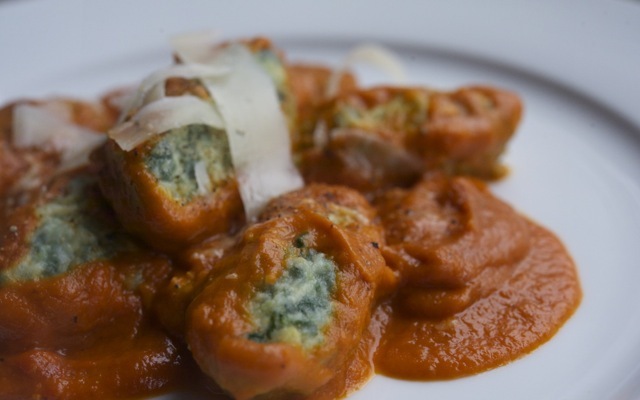
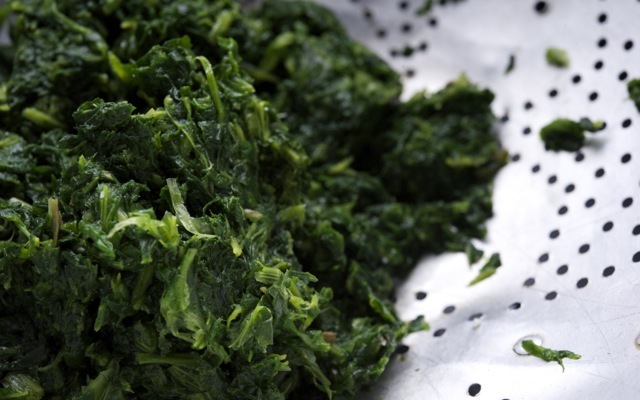
Seared Foie Gras on Brioche with Rhubarb Compote
Chateau d’Yquem Lur-Saluces 1989
Green Gnocchi with Gorgonzola Cream
Rocche del Manzoni Barolo 1993
Grilled Squab with Onion Timbale & Pomegranate Molasses
Gaja Sperss Barolo 1991
Herb Salad with Walnut Vinaigrette
Assorted Cheeses:
Chambertin
Cabrales
Clarines
Époisses
Trentadue Port 1986
Fresh Lychees
Queen Anne Cherries
Champagne Truffles
Veuve Cliquot Rosé
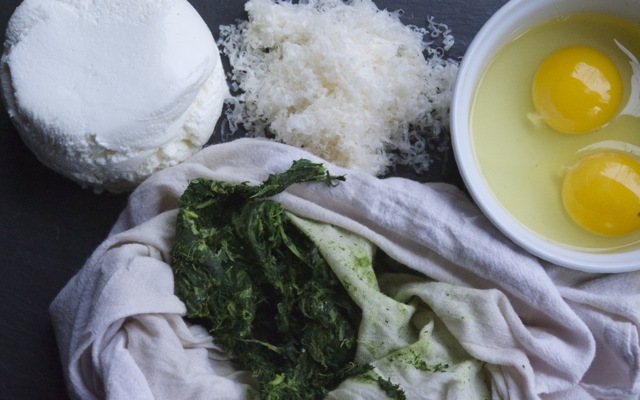
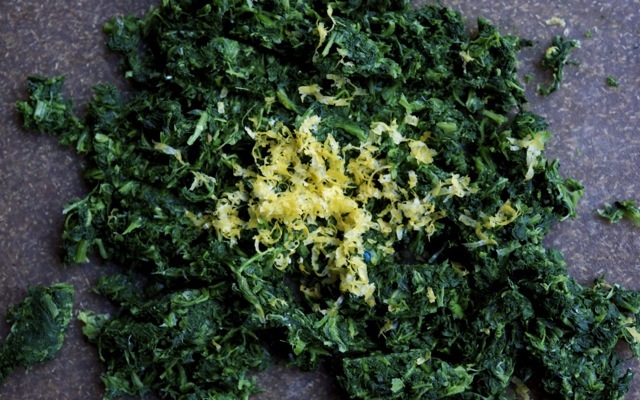
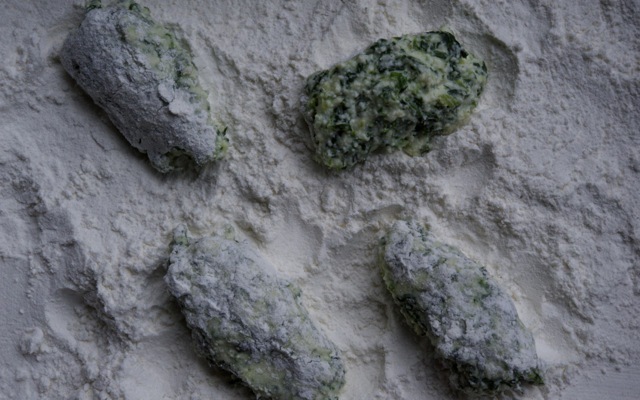

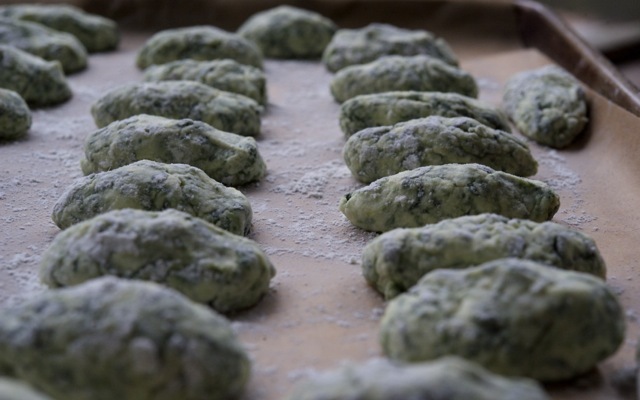
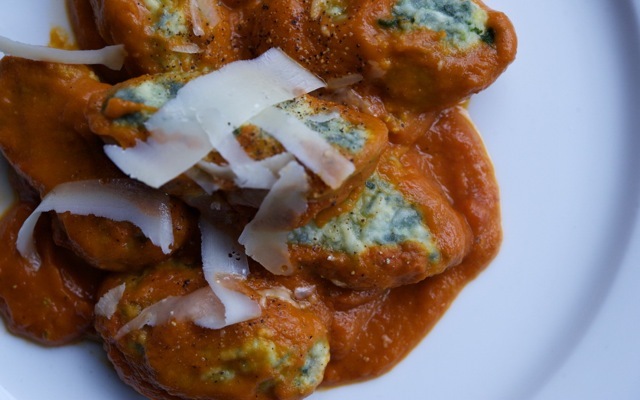
Try serving your gnudi with a few leaves of sage, arugula or spinach wilted in butter, or roll them in melted butter with slivers of lightly cooked carrot and fresh chervil. Pair them with barely cooked peas, tiny favas and finely slivered asparagus. In summer, try them with fresh corn kernels cooked in butter and a scattering of chopped basil or nasturtium blossoms.
Most importantly, with every bite rejoice at being alive! Ply your loved ones with these delicious morsels and celebrate the day.
Spinach & Ricotta Gnudi
- — 2 cups best quality whole milk ricotta
- — 10 oz cooked chopped spinach (frozen is fine)
- — 2 large cold eggs, lightly beaten
- — 1 tablespoon melted butter
- — zest of 1 lemon
- — 2/3 cup finely grated Parmesan
- — 1/4 teaspoon sea salt
- — all-purpose flour (GF is fine)
- — 8 tablespoons butter - for butter sauce
- — or 3-4 cups simple tomato sauce
The day before you make your gnudi, assess your ricotta. Place about 2 teaspoons on a dry paper towel and wait for a minute. It will always make a little wet spot under the cheese, but if it has thrown a wide ring of moisture, it is too wet to use as is. (This will generally be the case with any sheep's milk or more artisanal ricotta.) You'll need to strain/drain it by placing it in a fine mesh strainer or, even better, in a fine cotton kitchen towel or double layer of cheesecloth; suspend this over a deeper receptacle to drain for 8-24 hours in the refrigerator. You can speed up the draining operation by cinching the cheesecloth tight and squeezing some of the moisture from the ball of cheese.
You're actually going to squeeze any excess moisture from your spinach in this same way. Take the cooked, cooled (or defrosted and drained) spinach, wrap it in a clean kitchen towel and squeeze the bejesus out of it, draining off as much excess liquid as possible. Discard liquid and chop spinach fairly finely, but don't mince it into oblivion.
Place the ricotta in a large bowl and beat it vigorously with a spatula or wooden spoon. Stir in the eggs, the melted butter and the lemon zest. Add the Parmesan and the salt and beat again to create a light, fluffy mixture.
Now make a bed of flour about 1/2" deep in a shallow baking dish or on a sheet pan.
Using a shallow soup spoon, scoop out about a tablespoon of batter. Use your fingertip to push the almond-shaped scoop of batter cleanly from the bowl of the spoon onto the bed of flour. Flip it with your fingertip to coat lightly all over. Lift from the flour and gently rock it in your palm to shake off excess flour and help form an oval shape. Don't squeeze it. And don't worry about a few wrinkles, dimples and bumps.
Poach this first gnudo in a small pot of simmering well-salted water. It will sink, then swell, roll and bob to the surface. Maintaining a quiet simmer, cook until the gnudo is just firm, about 4 minutes from the time it floats. Don't boil hard or the gnocchi may explode. If, even at a gentle simmer, it spreads or starts to decompose, the cheese was probably too wet. This can usually be corrected by beating a teaspoon or so of egg white into the remaining batter. Then poach another sample to make sure the fix is successful. Taste the sample for salt, and adjust the batter if needed.
Using the same spoon-and-finger technique, form the rest of the gnudi, removing them from the flour and placing on a sheet pan lined with flour-dusted parchment. Keep smoothing the surface of the batter to permit smooth scoops. Be sure that the individual gnudi are not touching one another.
You can poach them right away, but if you refrigerate them uncovered for about an hour, they will firm up, making them easier to cook and handle. (They will keep for up to 8 hours that way.)
To cook the gnudi, bring 2-3 quarts of water to a simmer in a wide pot, 10 or more inches in diameter, so the gnudi aren't so crowded they will crush each other as they push to the surface. Salt the water liberally—about 1 teaspoon per quart.
Add the gnudi one by one, adjusting the heat to maintain the simmer. Dip your fingertips in water if you find they are sticking to the gnocchi, but don't worry if the gnocchi stick a little to the paper. Do avoid holding the tray of gnocchi in the steam. Cook the gnocchi as you did the sample, until just firm, about 4 minutes from the time they float. Cook in batches if needed.
Meanwhile, in a large skillet, heat a simple tomato sauce, or swirl together 8 tablespoons of butter and 2 teaspoons of water over medium heat to form an opaque butter sauce.
Lift the gnocchi out with a slotted spoon or skimmer and slide into the waiting skillet of warm tomato or butter sauce. Serve right away, topped with a grind of black pepper and a few curls of Parmesan.
 Download Recipe
Download Recipe






22 Comments